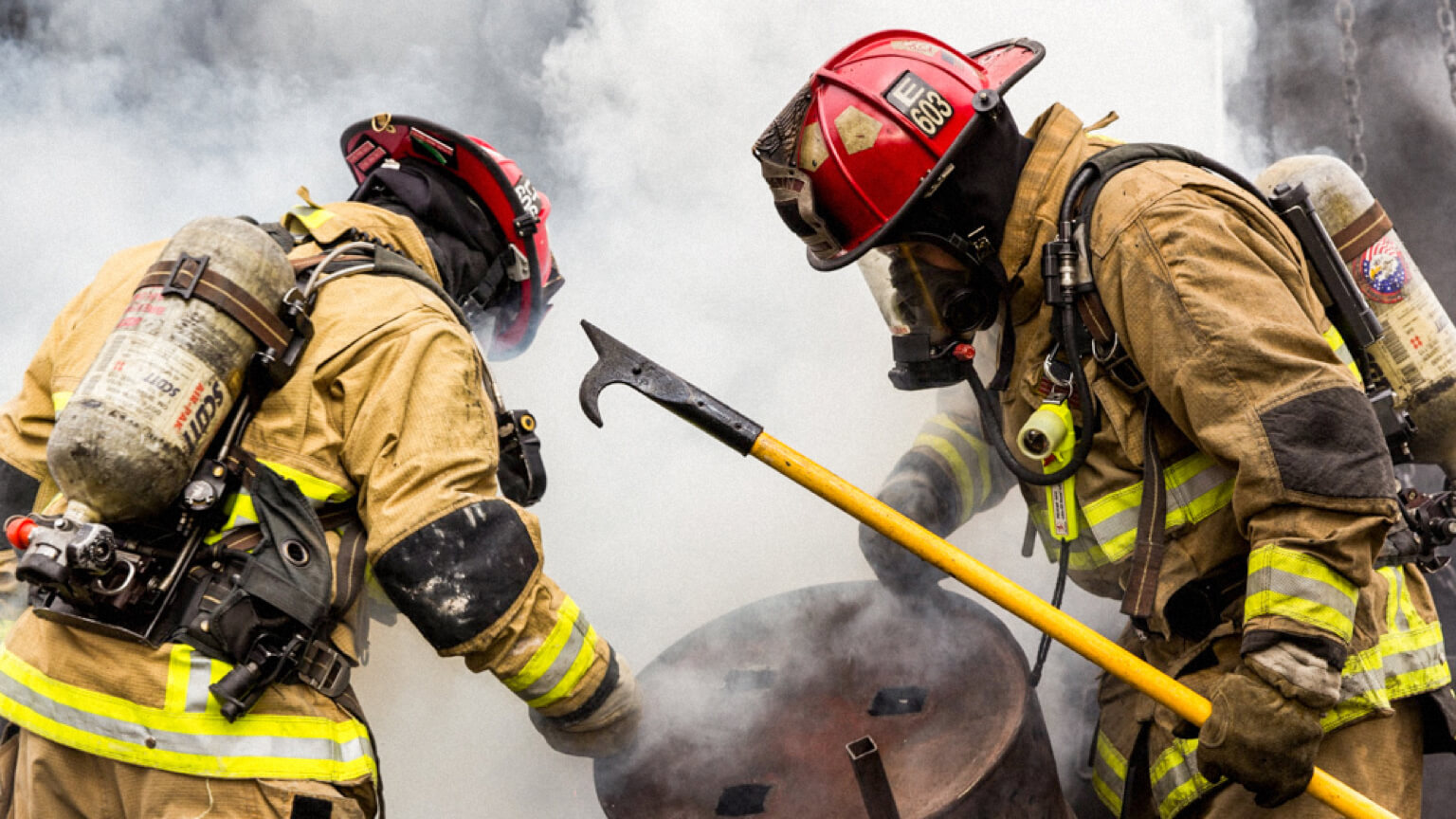- Part one of this series: The Application Process
- Part two of this series: Understanding the Testing & Interview Process
Now That You’ve Made the Cut – What’s Next?
You made it past the exams, the oral interviews, the physical agility test, and the background checks. You finally got the letter you have been waiting to receive and it announces your acceptance as a probationary firefighter to the fire department. Congratulations!
So, now what?
What happens next depends a lot on how the fire department structures its hiring process. In the beginning, you were told the minimum requirements for applying for the position of probationary firefighter. Each fire department’s process will vary slightly, but going through an academy course first is standard practice across most of the industry.
Heading to the Academy
If the department you are now about to join runs an academy, you will get a time and date to appear at the training academy and, probably, some other instructions on what to wear, what to bring, what is expected of you initially. Follow the directions and you are on your way.
If your academy is a start-to-finish program, you can expect from 16 weeks to as much as half a year of classroom training, practical skills training, and basic emergency medical training. The Basic EMT training will include doing rotations in a local hospital where you will gain experience in almost every phase of emergency medicine.
Your time in the academy will be intense and, at times stressful. You will be continuously watched and graded not just on your classroom performance but also on the way you work as a team member, how you interact with your classmates, and your attitude and demeanor.
The classroom parts of the academy are important, but your instructors and the Training Officer are also interested in how you adapt to the traditions and lifestyles of a firefighter.
The Shortened Track
Some departments require anyone applying for a job as a probationary firefighter to have completed a fire training academy and to hold a basic firefighter certificate issued by the state you will be working in. Your department may also require you to hold an EMT basic certification. If this is the case, your academy experience will likely differ and be much shorter.
Otherwise, you will attend a much shorter edition of the Fire Department Academy. The assumption is that you have the knowledge and have demonstrated the skills to work as a firefighter. During this abbreviated academy, your instructors will bring you up to speed on the expectations of your department, the policies, procedures, rules, and regulations of the department.
Going on Shift – The Probationary Period
Once you’ve completed the academy and passed the certification test, you are due another round of congratulations as you are now officially a part of a fire station crew!
You now have your duty uniforms and any other equipment provided by the department. More than likely, you will be issued a brand new set of personal protective equipment as well. The last thing you will get is your shift assignment. Welcome aboard.
Most departments require new firefighters to serve a one-year probationary period in which you are still subject to being tested, watched, and evaluated as part of your ongoing training.
In some states, you can be relieved from duty during this period with no legal recourse.
Those first few shifts can be rough. Your stress levels are going to be high as you begin your career. Strange people, strange places, and unknown routines can leave you feeling lost and sometimes abandoned.
Take heart and remember that everyone living in the fire station where you now have a second home once went through the same emotions and fears you are feeling. They understand and will help you along. If you don’t understand something, ask questions. If you want to fit in, join the life of the fire station. The most important thing to do is to listen.
Becoming A Part of Traditions Or Helping To Build New Ones
Firefighting is filled with long and rich traditions. Your department will have some of their own traditions, and you should learn these traditions and participate in them wherever possible. These traditions can take the form of specific holiday gatherings or celebrations, a specific color of a helmet, or particular procedures or processes for things.
Almost every fire station will have these traditions in place, an exception would be brand new fire stations that have been recently built and created. In this case, if assigned to a new fire station, you will have the chance to create those traditions that will carry on long after you have served your time and moved on to new assignments or have retired.
Long past my retirement, I still miss the comradery of the fire station. The men and women with whom I worked for many years are still part of my family. You will soon learn that this is more than just a job, and the people that make up the fire service are more than just co-workers.
Advanced Certifications and Specializations
Once you pass your probationary period, you can begin to look down your career path. Opportunities abound in the fire service and your department for promotion, advancement, and career development.
Take your time to get settled into your role as a firefighter. In most cases, you have at last two years before you are eligible to take your first promotional exam. During those two years, your department may have some milestones that you must reach to be eligible for a promotion.
Firefighter I and Firefighter II Certifications
Most career fire departments now require new firefighters to complete the requirements to achieve the NFPA certifications by taking the Firefighter I and Firefighter II exams. Specific study tasks, as well as a set of regularly scheduled skills tests to evaluate your progress, are generally administered by your company officer.
Some departments will make holding a Firefighter II certificate a requirement to take promotional exams when you have served enough time in the department.

Moving Up The Ladder
The generally accepted method for most fire departments in the U.S. is to advance up the ranks through competitive testing. Unlike the entrance exam, these competitive promotional tests are all about the knowledge of fire department operations. The tests come from a list of materials provided by the department or the HR department. These lists can include:
- Fire Department Rules and Regulations
- The policies of the jurisdiction having authority
- State laws and rules governing firefighters and fire departments
- NFPA Standards
- Other textbooks, materials, and standards pertinent to the position for which you are testing
In some cases, the list may be quite long. In any case, the fire department should provide a copy of all of the required study materials in the fire station library. The problem is there may be other firefighters assigned to your station who are also studying for the same exam.
It may well be to your advantage to invest in a personal copy of these materials so that you can study in your off time as well as when you have that bit of free time at the fire station. Preparing for a promotional exam requires concentration, dedication, and time.
If you are serious about making a career in the fire service, you will find that study time is a permanent part of your career.
Departments structure the organization along the lines of para-military ranks. In the fire service, most departments rank structure looks similar to this:
- Engineer/Chauffeur
- Lieutenant
- Captain
- Battalion or Division Chief
- Deputy Chief
- Chief of the Department
Each succeeding rank has more authority and more corresponding responsibility. Your time in the academy exposed you to the basic concepts of the departmental organization, ranks, and the responsibilities that go with each.
Specializations In the Fire Service – More Choices Along the Way
You will face some critical decisions during your time in the fire department about which career pathway(s) you could take. Different specialties will require additional certifications, and there are many different pathways to choose from. Here are just a few of the different specialty options that are common amongst firefighters:
HAZMAT
Many larger fire departments operate dedicated HAZMAT response teams. These teams train to recognize, identify, and respond to incidents that involve dangerous chemicals.
Aircraft Crash, Fire, and Rescue
The responsibility for responding to aircraft emergencies falls to many large metropolitan fire departments. These fire stations are often dedicated solely to the protection of aircraft and the attendant support facilities at airports and don’t respond to calls off the airport property. Crash, fire, and rescue teams are highly specialized and require special equipment.
Rescue
In certain areas, specialized rescue teams are needed because of the types of structures or other hazards that may exist due to extremes in weather, geography, or other general hazards. These types of rescue teams can include:
- Structural collapse teams
- High-angle rescue teams
- Confined space rescue teams
- Water rescue teams
- Mountain rescue teams
Advance Medical
Your department may provide advanced life support and ambulance service to your community. Where this is true, you may have the opportunity to train up to the level of Paramedic and become nationally certified. In most cases, this takes you out of the firefighting business and puts you full-time into the medical service of the department.
Fire Investigator
You will become familiar with the fire investigators that make up the Fire Marshals division of your department. There will come opportunities to make the switch and, through additional training and certifications, become a fire/arson investigator. Fire investigators usually become a Certified Peace Officer within your state as well as a Certified Firefighter.
Fire Training
If education interests you, a move into the training division of your department may be attractive. Some people are natural teachers and find satisfaction in training the newest members of the fire department. You may get the opportunity to participate in this role part-time while you are serving at a fire station by becoming an instructor. Teaching the occasional class is often an excellent way to make the transition to the training academy full-time if you find it appealing.
These are just a few of the opportunities that will eventually come your way during your career as a firefighter. You should be aware of them and be prepared to make some decisions when the opportunities arise.
What You Have Really Accomplished
By making the cut and joining the long tradition of firefighters in the U.S., you have not just gotten a job or even a career. You have entered a brotherhood that goes back more than 200 years. The satisfaction and pride that this career can afford you are without limit.
Your career is now yours to make. Immerse yourself in the fire service. Continue to learn and train. Take every opportunity afforded you to expand your skills and your knowledge. The truth is that nothing is standing between you and the Chief’s office but time, effort, and willingness to work.
We continue the conversation about becoming a firefighter in part four of this blog series: Job Outlook & Coming Industry Changes


